Neapolitan Pizza Dough Recipe
This Neapolitan pizza dough recipe is one of the shining stars of Italian cuisine, capturing that simple, traditional feel. Made with just a few key ingredients, this dough gives you a crust that's light, soft, and perfectly charred - the ideal base for the classic pizza Napoletana.
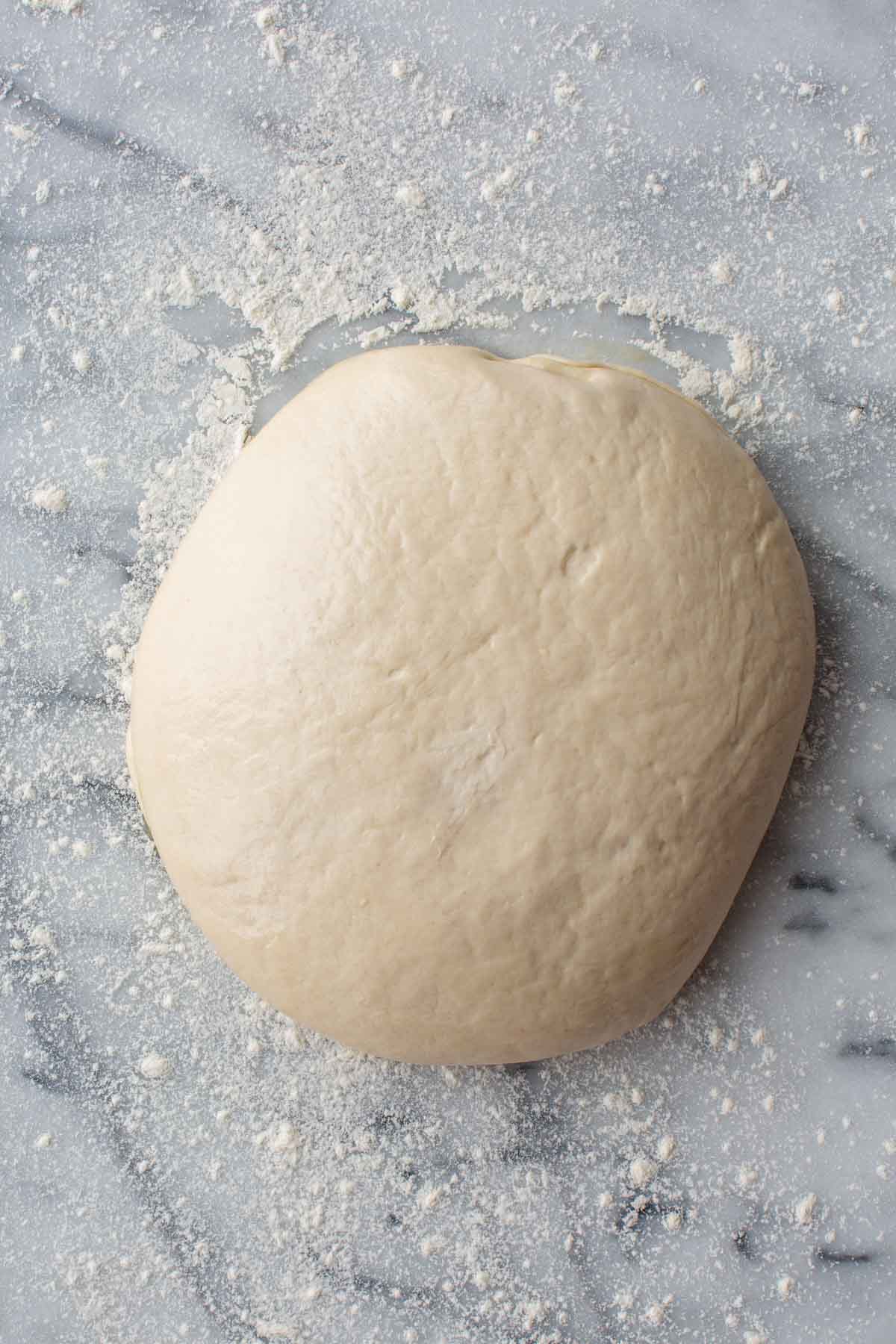
Growing up, my Grandpa Genovese was famous for his homemade bread and pizzas. If we weren't eating Sunday sugo or chicken parmesan, we were probably having pizza.
This post may contain affiliate links.
My grandpa would give me and my cousins a little piece of dough to play with while we watched him work his magic. Those early memories sparked my love for cooking and pushed me to become a trained Italian chef!
There are so many styles and techniques for making pizza dough. This is the traditional Neapolitan version.
For other pizza recipes, try my quattro formaggi pizza, grilled pizzas with prosciutto and corn or Scaccia Ragusana!
What is Neapolitan Pizza?
Neapolitan-style pizza distinctively sets itself apart with just a few key differences.
- Neapolitan pizzas are traditionally smaller in diameter (around 12 inches) compared to other styles like New York or Sicilian. This allows for a more consistent cooking time and temperature.
- Its thick, pillowy outer crust strikes a perfect balance between softness and a bit of char. This happens by baking it in a super hot oven, often wood-fired, hitting temperatures of over 800°F.
- The dough itself has a distinct chewiness from being made with just four simple ingredients: flour, water, yeast, and salt.
- Typically, this dough is made at least a day ahead, as it needs a long, slow rise in the fridge to develop its texture and flavor. But the results are definitely worth it!
- Finally, Neapolitan pizza is all about simplicity and tradition. It's not overloaded with toppings like New York style or thin-crusted like Roman style. Instead, it really relies on quality ingredients and letting the dough shine.
In Naples, Italy, they have two traditional styles: Margherita and Marinara.
Margherita has tomato sauce, mozzarella di buffala or fiore di latte cheese, extra virgin olive oil, and basil. Pizza Marinara has no cheese - just marinara sauce, extra virgin olive oil and oregano.
Some traditional pizzerias in Naples only serve these two varieties, but you will find plenty that use other more creative toppings.
I've been lucky enough to enjoy real Neapolitan pizza in Naples, including at the famous L' Antica Pizzeria da Michele featured in Eat Pray Love!

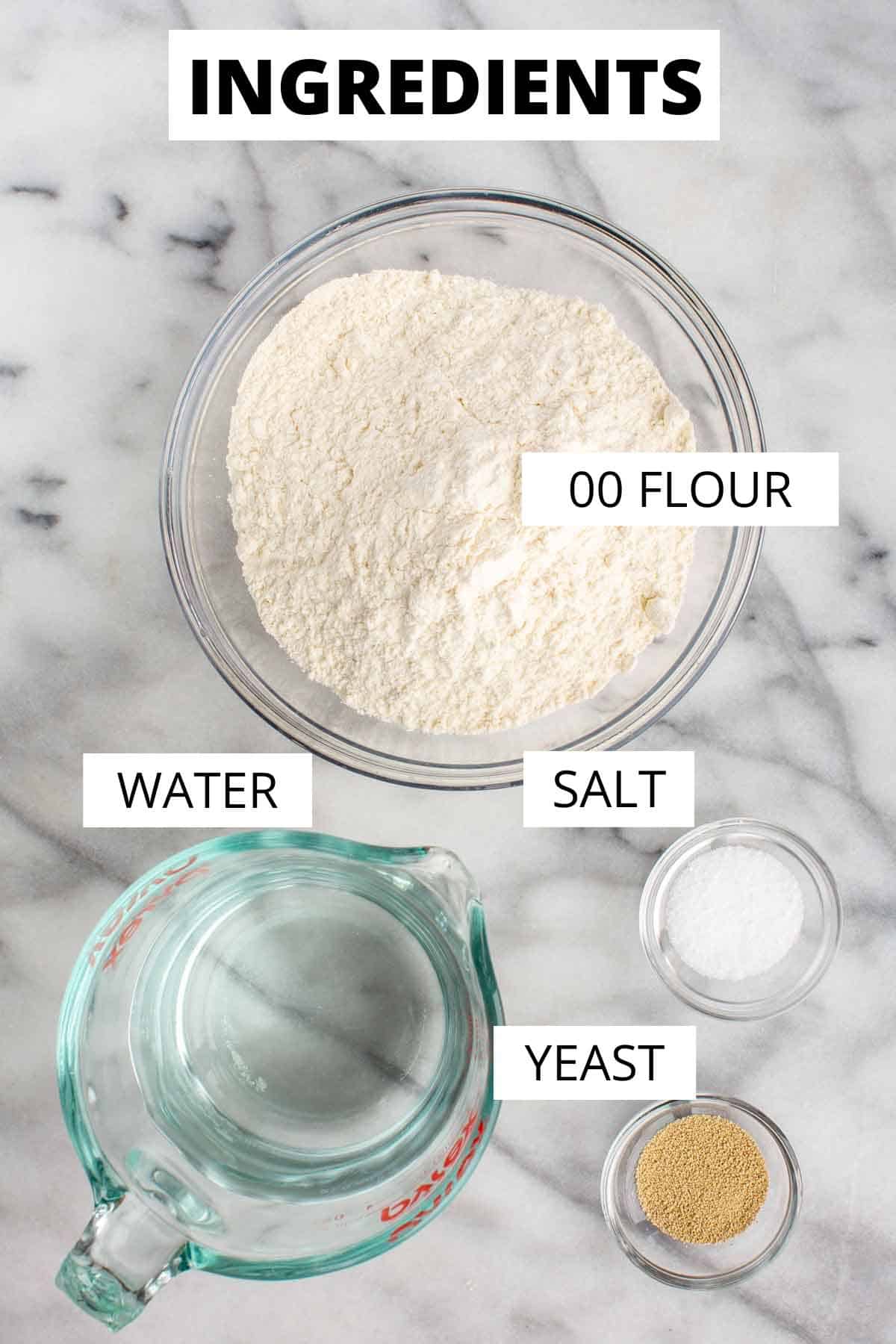
Neapolitan Pizza Crust Ingredients
- Flour: Italian Tipo 00 flour is preferred for a truly authentic Neapolitan pizza dough, but bread flour also works. The difference between the two is the level of protein (gluten) in the flour, with Tipo 00 being slightly lower than bread flour. This results in a softer and chewier crust.
- Yeast: There are different types of yeast that can be used for pizza dough - natural sourdough starter, instant/rapid rise, or active dry. For this recipe, I prefer to use active dry yeast as it gives the dough a longer fermentation time and results in a more flavorful crust. Instant/rapid-rise yeast can also be used, but the dough will need to rise for a shorter amount of time.
- Water: Using cold filtered water is important for this Neapolitan pizza dough recipe as it helps create a slow rise and allows the dough to develop more flavor.
- Salt: Sea salt is the preferred type of salt for this recipe, but any type of salt will work. Just make sure to adjust the amount accordingly if using a different type of salt.
*Full ingredient list with quantities is in the recipe card at the bottom of this post.
Helpful equipment
- Home Pizza Oven - I highly recommend investing in a pizza oven for the best results, but don't worry if you don't have one. A regular oven with a broiler will work just fine - the key is to get it as hot as possible. If you do want to invest in a pizza oven, check out Roccbox, Ooni, or Big Green Egg!
- Pizza Peel - This is used to transfer the pizza onto the hot surface in the oven. If you don't have one, you can use an inverted baking sheet or parchment paper as a substitute.
- Pizza Stone - A pizza stone, or even an upside-down baking sheet, is essential for getting that perfect crispy crust. It's important to preheat the stone in the oven before cooking the pizza on it.
- Kitchen Shears - A trick I learned from my grandpa is using kitchen shears to slice pizza. A pizza cutter or sharp knife does the job, too, but let me tell you, the scissors work like a charm! I've got a pair just for pizza.
How to make Neapolitan Pizza Dough

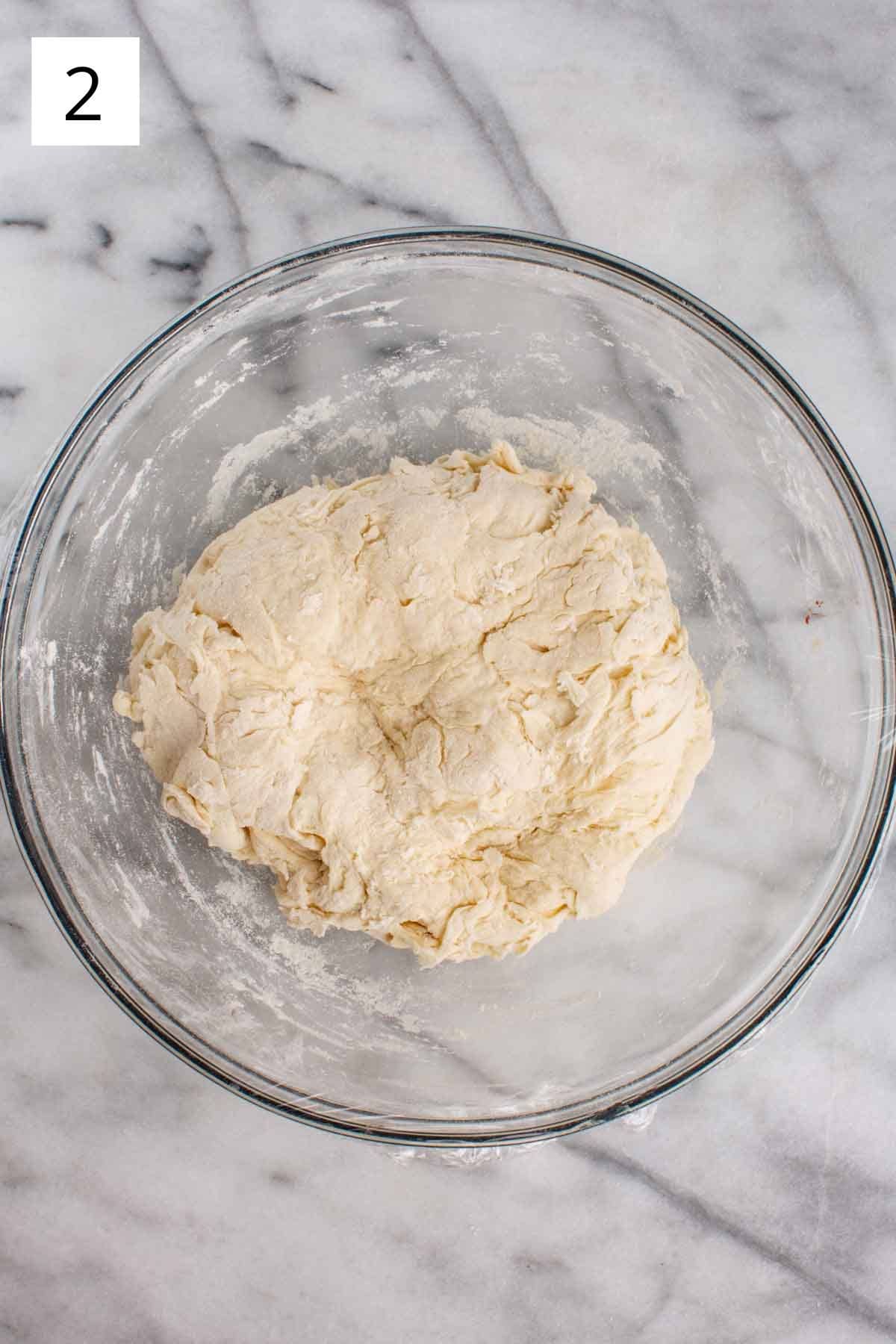
1) Combine the flour, yeast, and water in a medium bowl.
2) Mix until just combined, then cover and rest for 30 minutes to hydrate.
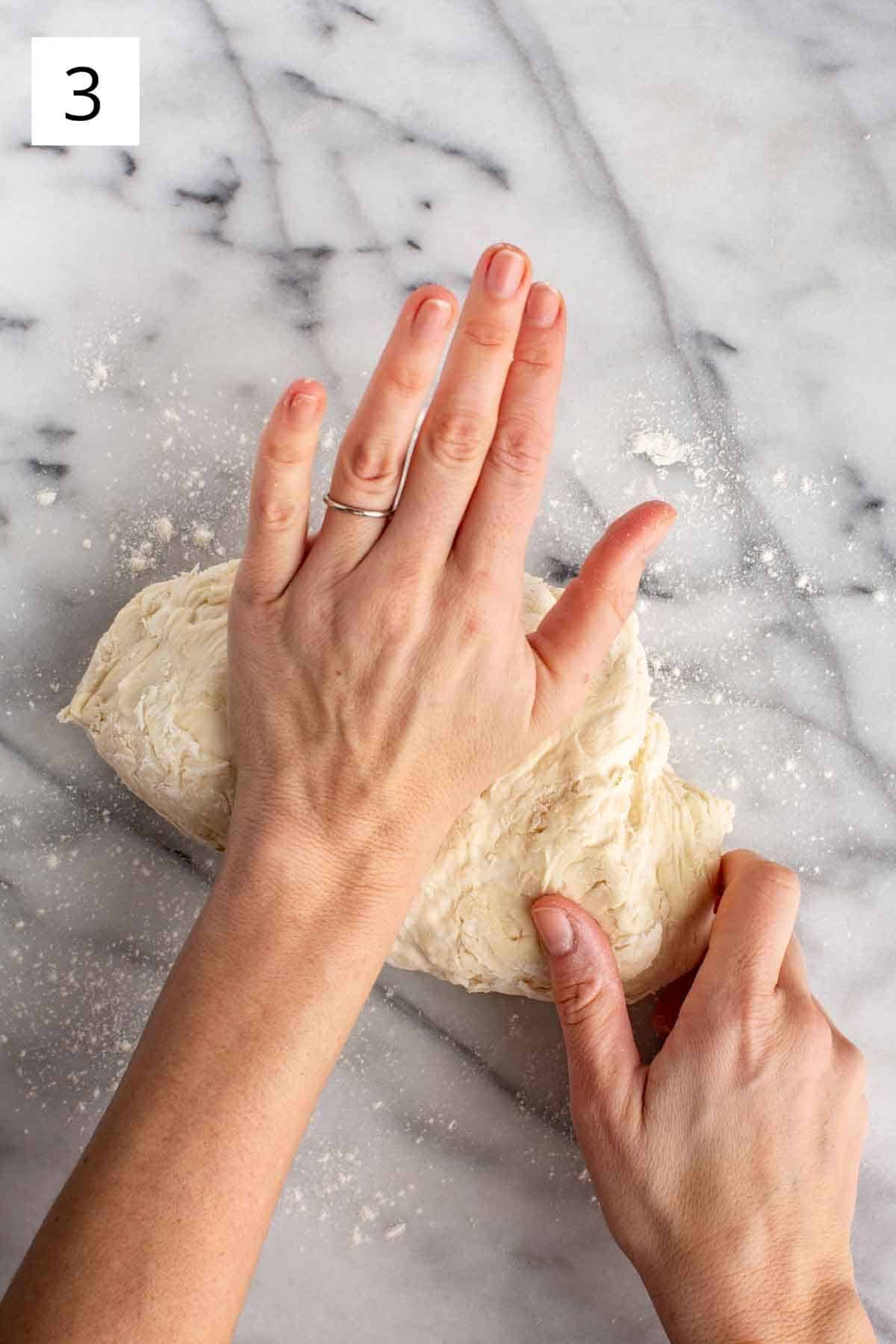

3) Turn the dough out onto a lightly floured surface. Sprinkle the salt over the top, then knead it into the dough until fully combined.
4) Keep kneading the dough by stretching and folding it for around 15-20 minutes, making sure not to tear it.
Tip: You'll know it's ready when it feels super smooth, bouncy, and elastic when pressed with your finger. Or, just use a stand mixer with a dough hook if you prefer!
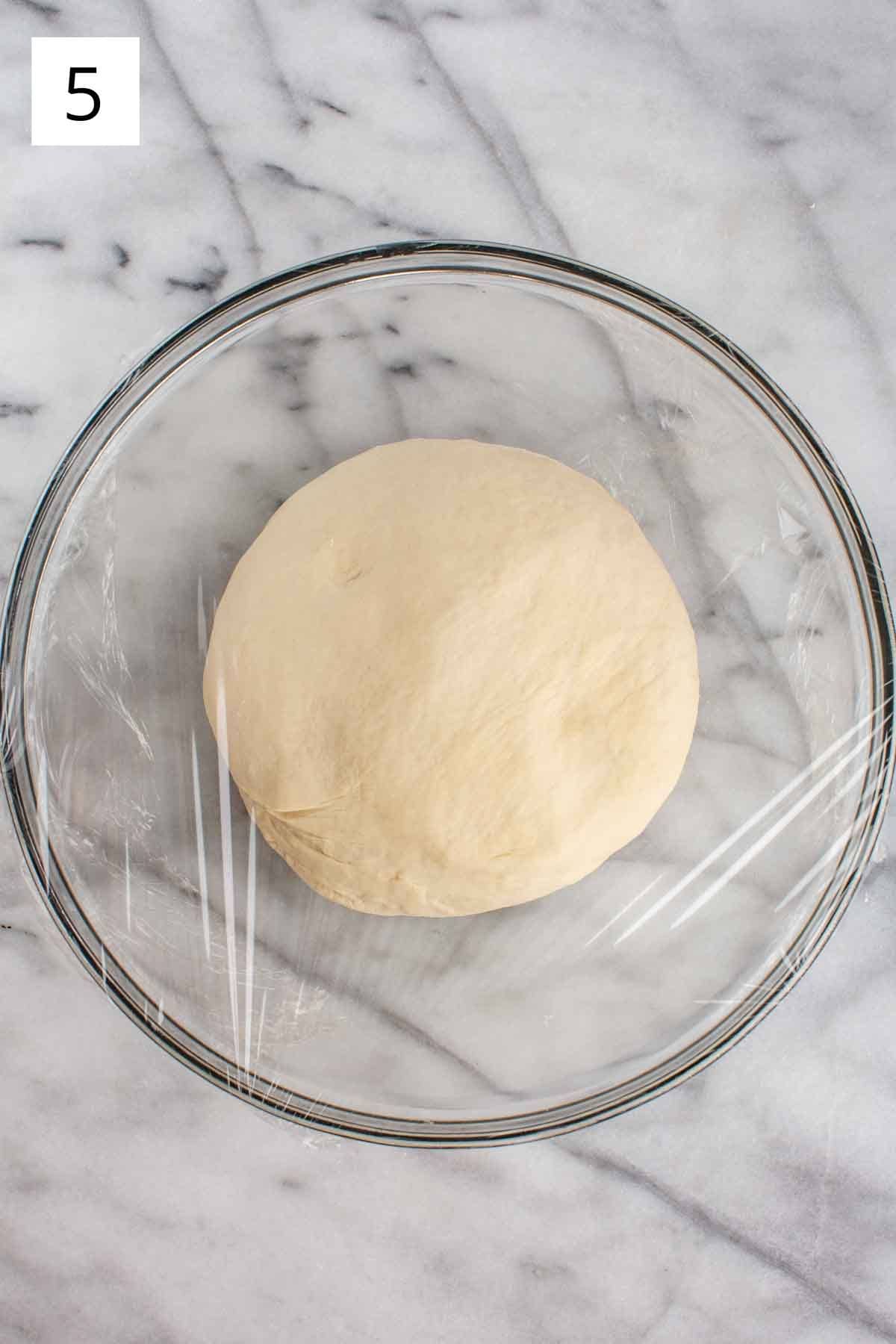
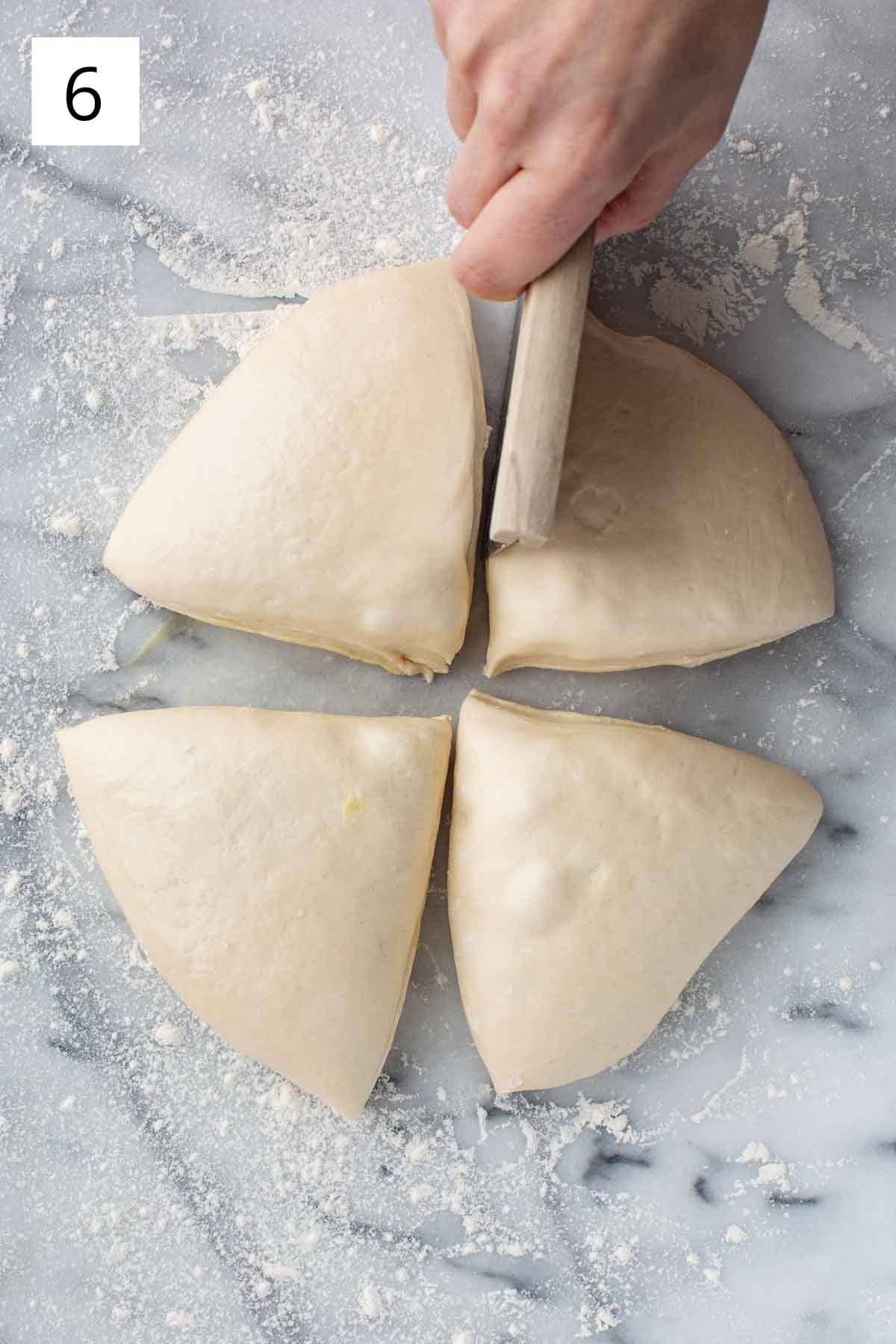
5) Transfer to a lightly oiled bowl, cover with plastic wrap, and refrigerate for at least 24 hours and up to 3 days. Remove from the refrigerator at least 3 hours before baking.
6) Lightly dust a work surface with flour, then use a bowl scraper to scrape the dough on top. Divide it into 4 equal pieces (about 9 oz or 250 grams each).
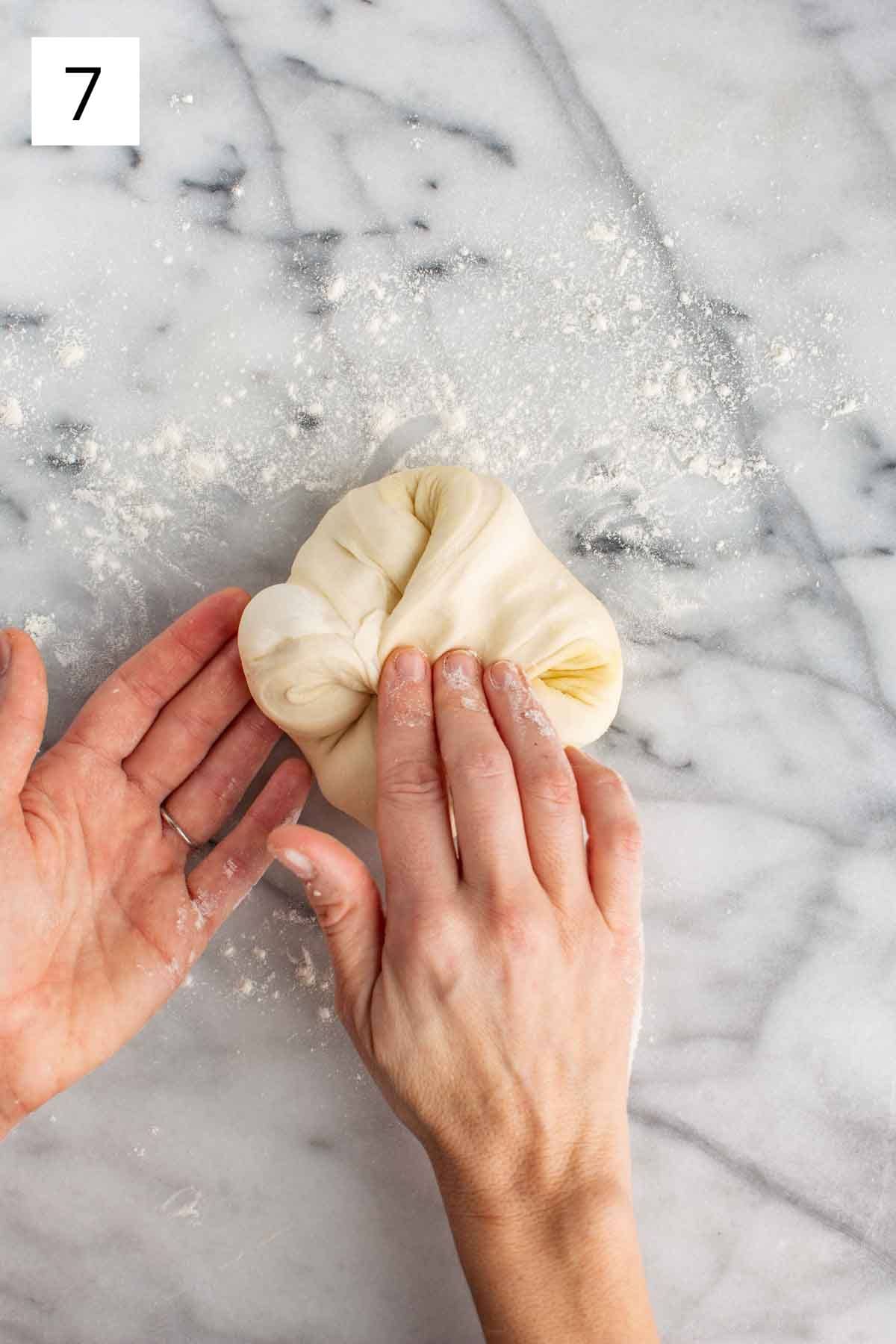
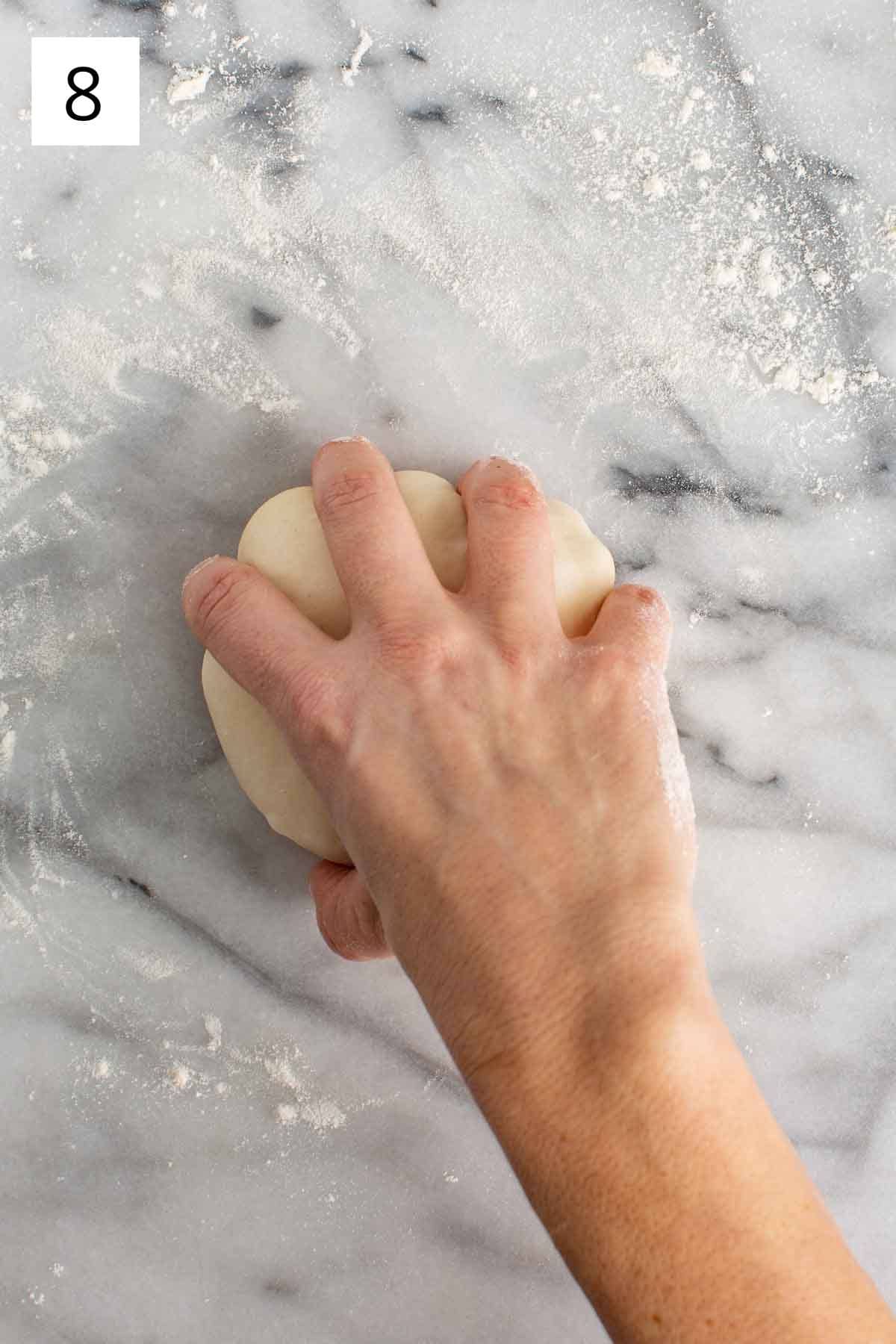
7) Take a piece of dough and fold all 4 corners towards the center, gently press to stick them together.
8) Place it seam-side down, then cup your hand around it with your fingertips touching the counter and gently rotate it until it forms a ball. Repeat with the remaining pieces of dough.
Note: Be careful not to let the dough tear.
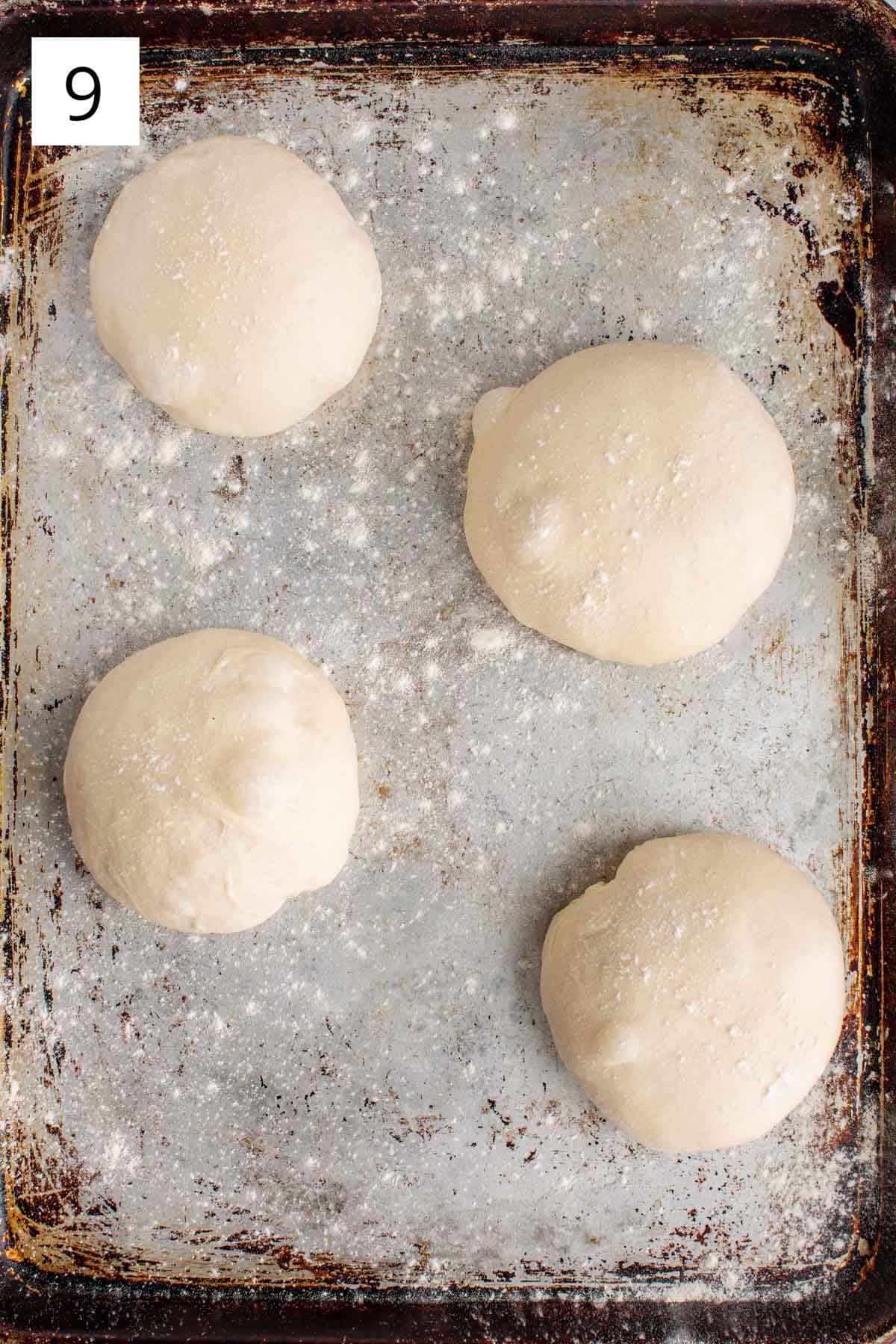
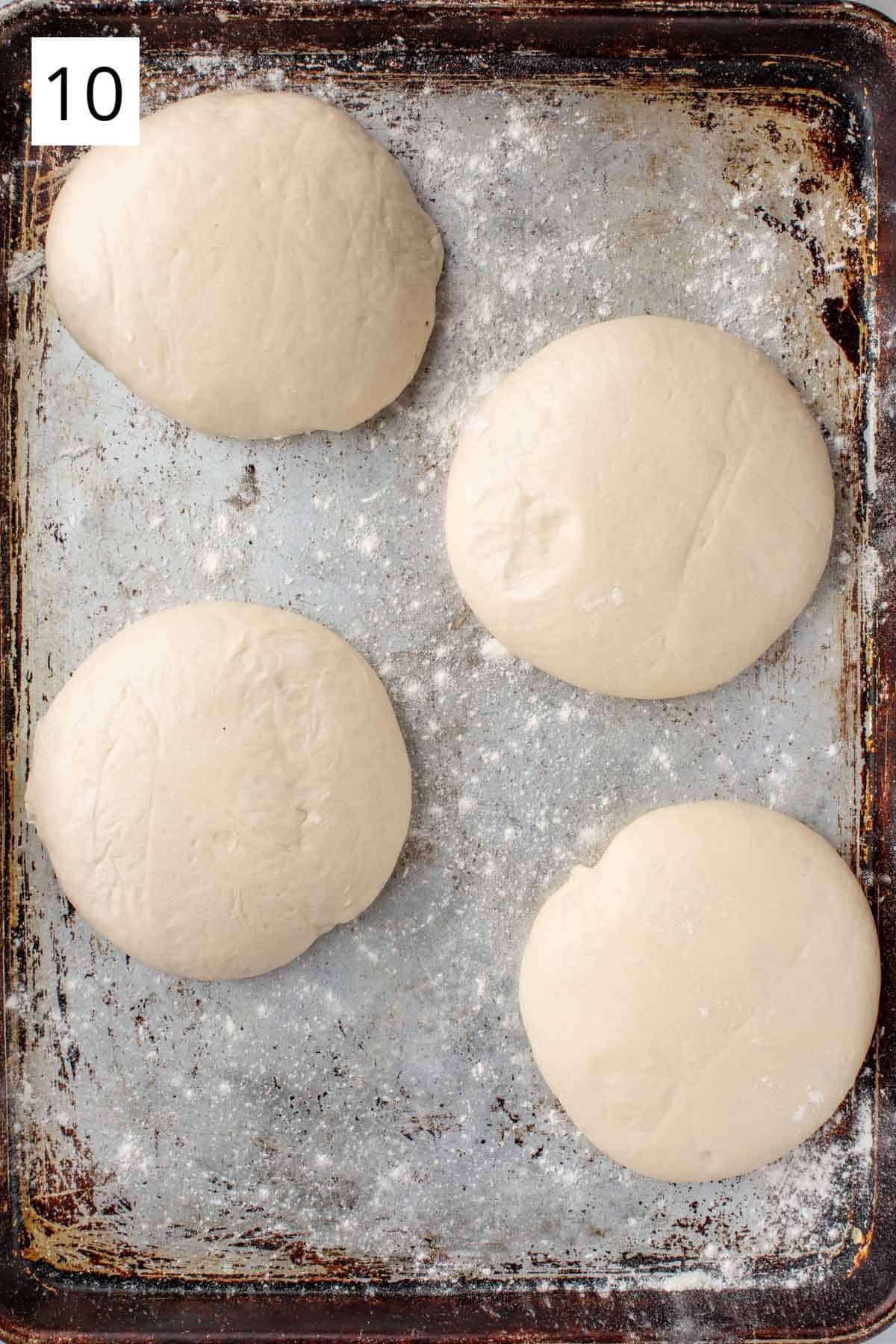
9) Transfer the dough balls to a lightly floured sheet pan, dust with more flour, and cover with plastic wrap.
10) Let rise in a warm spot until doubled in size, about 2 hours.
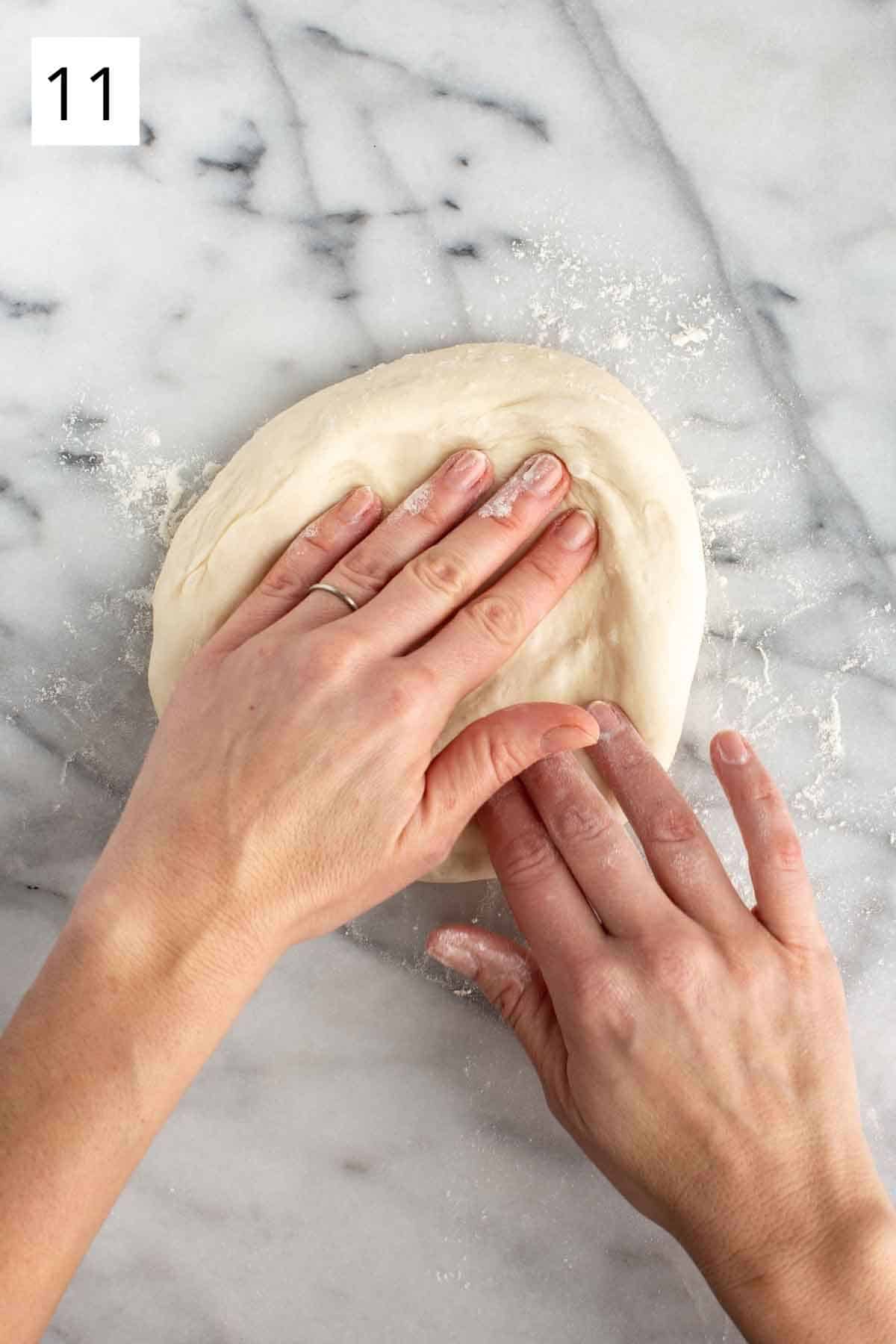

11) Place a dough ball on a floured surface and sprinkle more flour on top. Press fingers into the center and rotate gently while stretching outward. Turn over, repeat until about 8 inches in diameter.
12) Place the dough over the back of your hands and use your knuckles to stretch it to about 12 inches gently. Be careful not to tear the dough.

How to cook Neapolitan Pizza Dough
1) Preheat a pizza stone in the oven, on the center rack, at 550°F (or the highest your oven will go) for at least 45 minutes. Once heated, turn on the broiler.
2) Transfer dough to a pizza peel that’s been dusted with flour. Add toppings, being careful not to use too much, then immediately place on the baking stone using a shimmy shove motion.
Tip: Avoid having the oven door open any longer than absolutely necessary to retain the heat.
3) Keep a close eye on it as it cooks, rotating if necessary, but try to keep the oven door closed to retain as much heat as possible.
Note: It’s done when the crust is lightly charred around the edges, the cheese is melted, and the toppings are cooked - anywhere from 4-8 minutes.
4) Remove the pizza from the oven, transfer it to a cutting board, cut it into slices, and serve immediately. Repeat with the remaining dough.

Italian Pizza Dough Recipe Tips
- Use a food scale to measure ingredients for consistency.
- The longer the dough rests in the fridge, the better it will taste. Just be sure to bring it back to room temperature before shaping and cooking.
- Make sure the Italian pizza dough is well-floured so it doesn't stick to the peel, or just use parchment paper.
- The dough is ready to be used when it feels smooth and bounces back when you press into it.
- Try to stretch the pizza dough evenly so that it cooks evenly in the oven.
- Less is more when it comes to toppings – too much can make the crust soggy.
- Rotate the pizza as needed during cooking to prevent too much charring in one spot.
- Use a pair of sharp kitchen shears to cut the pizza Napoletana. A pizza cutter or sharp knife works fine, but the scissors work especially well!
Serving suggestions
Throw a pizza party!
Start with an antipasto of some sort. These marinated olives are always delicious with Italian long peppers and eggplant caponata.
Then, give everyone their own prepared pizza dough ball and separate bowls of toppings, such as:
- Pepperoni or soppressata, hot pickled peppers and honey
- Sliced Italian meatballs and ricotta
- Caramelized onions, mushrooms, and truffle oil
- Prosciutto, fig jam, arugula, and gorgonzola cheese
- Italian sausage and peppers with broccoli rabe
Round out your meal with a nice salad with a homemade vinaigrette and, of course, plenty of wine!
And don't forget to pair an Italian dessert like pignoli cookies, ricotta pie, chocolate panna cotta, or Sicilian ricotta cannoli.
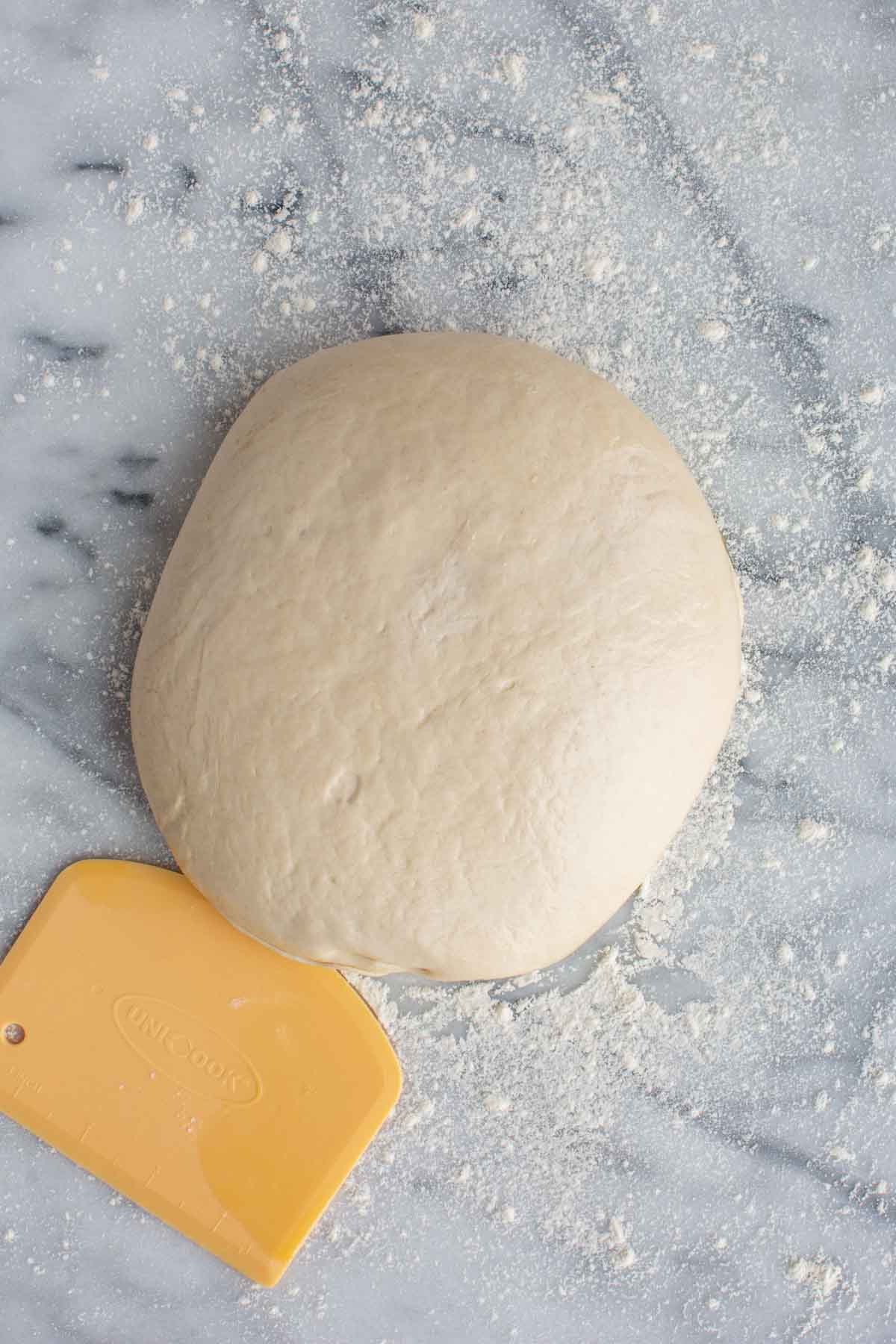
FAQs
Neapolitan pizza dough is made with a few specific ingredients: 00 flour, water, salt, and yeast. The dough is also fermented for at least 24 hours to develop flavor and texture.
Plus, Neapolitan pizza is cooked at a very high temperature for a short period of time, resulting in a chewy and slightly charred crust.
Regular pizza dough often includes additional ingredients such as sugar and oil and is typically not fermented for as long. It may also be cooked at a lower temperature for a longer period of time.
You can, but the texture and flavor will not be the same.
00 flour (called doppio zero in Italy) is finely ground and has a lower protein content (thanks to the soft wheat). It results in a softer and more delicate crust because it doesn't develop as much gluten when kneaded.
While it's ideal to have a pizza oven or a regular oven with a broiler attachment, you can still make delicious Neapolitan pizza at home with a pizza stone or even a cast iron pan. A pizza peel is also helpful for transferring the dough into the oven.
You can make the dough ahead of time and let it ferment in the fridge for up to 3 days. Just make sure to remove it from the fridge at least 3 hours before using it so it can come to room temperature and be easier to work with.
Divide the dough into individual balls, wrap each one tightly in plastic wrap or place in a freezer bag, and freeze for up to 3 months.
To use, thaw overnight (or at least 24 hours) in the fridge before bringing it to room temperature, and follow the directions in the recipe card below.
Related recipes
Did you make any of these recipes and LOVE it? Please leave a star ⭐️ rating and/or comment to help other readers!
Want to Save This Recipe?
Enter your email & I'll send it to your inbox.
By submitting this form, you consent to receive emails from Coley Cooks.
Best Neapolitan Pizza Dough Recipe
Ingredients
- 590 grams Italian Tipo 00 flour or bread flour about 5 scant cups
- 1¾ grams active dry yeast ½ rounded teaspoon
- 380 grams room temperature water about 1 ½ cups
- 12 grams kosher salt about 2 ¼ teaspoons
Instructions
- Combine the flour, yeast and water in a medium bowl. Mix until just combined, then cover and rest for 30 minutes to hydrate.
- Turn the dough out onto a lightly floured surface. Sprinkle the salt over the top, then knead it into the dough until fully combined.
- Continue kneading the dough by stretching and folding, for about 15-20 minutes, being careful not to tear the dough. It’s ready when it feels very smooth, elastic and easily bounces back when pressed with your finger. Alternatively you can do this with a stand mixer and a dough hook.
- Transfer to a lightly oiled bowl, cover with plastic wrap and refrigerate for at least 24 hours and up to 3 days. Remove from the refrigerator at least 3 hours before baking.
- Lightly dust a work surface with flour, then use a bowl scraper to scrape the dough on top. Divide it into 4 equal pieces (about 9 oz or 250 grams each).
- Take one piece of dough and fold all 4 corners into the center, gently pressing to adhere.
- Place it seam-side down, then cup your hand around it with you fingertips touching the counter and gently rotate to until it forms a ball. Be careful not to let the dough tear. Repeat with the remaining pieces of dough.
- Transfer the dough balls to a lightly floured sheet pan, dust with more flour and cover with plastic wrap.
- Let rise in a warm spot until doubled in size, about 2 hours.
- Place a dough ball on a generously floured surface and sprinkle more flour on top. Press your fingers into the center of the dough and gently rotate it while stretching outward against the surface.
- Turn it over and continue the same movement until it’s about 8 inches in diameter.
- Place the dough over the back of your hands and use your knuckles to gently stretch it to about 12 inches. Be careful not to tear the dough.
To Cook in a Home Oven
- To cook in a home oven, preheat a pizza stone in the oven, on the center rack, at 550°F (or the highest your oven will go) for at least 45 minutes. Once heated, turn on the broiler.
- Transfer dough to a pizza peel that’s been dusted with flour. Add toppings, being careful not to use too much, then immediately place on the baking stone using a shimmy shove motion. Avoid having the oven door open any longer than absolutely necessary to retain the heat.
- Keep a close eye on it as it cooks, rotating if necessary, but try to keep the oven door closed to retain as much heat as possible. It’s done when the curst is lightly charred around the edges, the cheese is melted and the toppings are cooked, anywhere from 4-8 minutes. Alternatively you can use a pizza oven if you have one.
- Remove the pizza from the oven, transfer to a cutting board, cut into slices and serve immediately. Repeat with the remaining dough.
Notes
- It’s important to stretch the dough with your hands - do not use a rolling pin or other method to achieve the right texture, crust, air bubbles.





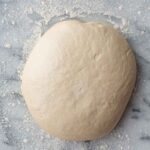
Made the dough felt great. Taste test tomorrow
Awesome! Can't wait to hear how it turns out!
At what stage would you freeze the dough for later use?
I recommend freezing the dough in individual balls, but before the second rise. Follow the instructions up until that point, then freeze. Upon defrosting, be sure to let them rise before stretching. Hope this helps!
Hi, can’t wait to make Neapolitan pizzas this weekend.
There’s only 2 of us. How do I freeze the leftover dough?
Great question! To freeze extra dough, wrap each ball tightly in plastic wrap or place in a freezer bag, then freeze for up to 3 months. To use, thaw overnight in the fridge before bringing it to room temperature, then follow the directions in the recipe card. Let us know how it turns out!
Turned out excellent. Easy to make and very delicious. I used my RecTeq Bullseye 380 at "Riot" (nearly 800 degrees), with a pizza stone... amazing results.
So happy you loved the recipe! Thanks for your comment. Curious how you like the RecTeq Bullseye??!
Yum! Perfetto🇮🇹
Grazie mille! Thanks for leaving a review 🙂
Finally the pizza crust I've been craving! With this dough, I made 3 pizzas and a stromboli. 2 pizzas and the stromboli were made on consecutive nights. The last pizza was tonight, about 10 days later (I had saved the last 1/4 of the dough in its proofing bucket in the fridge). All were just amazing. That last one...it's in my belly right now...may have been the best. Thank you!!
Thank you so much for taking the time to leave a review! I'm so glad you love the recipe. It really does taste better with a little extra time to ferment, doesn't it?! 😀
I didn’t have the right flour so I used what I had and it still turned out great! Highly recommend
I'm so glad it worked out for you! The 00 flour makes a subtle difference, but you can absolutely have great results with bread flour or all purpose flour. Thanks for taking the time to leave a review!
Nicole, I am anxious to try your recipe. Your directions are great. I have one question…when you mentioned options for yeast you said you could use sourdough starter. I have sourdough discard can I use that if so, how much should I use?
Hey Robin - It's a bit more complicated than a simple conversion, but it can definitely be done with great results! Check out this article to learn more https://www.pantrymama.com/how-to-convert-any-yeast-recipe-to-sourdough/
have not made yet, but I have a question.... can you divide into individual balls after the initial 1 hour or so bulk proof? or is it best to bulk proof for 24 hrs and then divide. does this really matter one way or the other?
Hey Danny - I'm not totally sure I understand the question. You definitely want to let the dough proof for at least 24 hours in the refrigerator so it can develop nice flavor. You can divide the dough into individual portions before the bulk proof, but I wouldn't actually stretch and shape them into balls until after the proof. Let me know if you have any more questions - hope this helped!
Great job, just one thing Neapolitan pizza has a great deal of moisture evaporating from it when removed from the oven, place on a wire rack first, let it rest for 3 or 4 minutes, then slice and serve.
Hey, thanks for the tip! Great idea, as sogginess can be an issue. Appreciate it!
Makes a great pizza crust. Much easier to follow than any of the others I have tried.
SO glad you enjoyed the recipe!